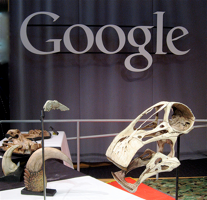He sets up what was wrong with Apple before 1997.
“The total is less than the sum of the parts.” Things had to be restructured. The customer was being led to the altar of tech instead of the other way around. Great engineering, bad management. Focused on the tactics, not on the strategy. Technology did not sell things; what technology could do to help the user is what sold things.
Then he lays out what focussing really is – not saying yes but saying no. And you have to know how to deal with pissed off people.
What happens next is exceptional and simply amazing to see. We are used to almost sociopathic behavior from CEOs. Here we see what a true leader can accomplish, one who can engender the fanatical enthusiasm that Jobs can.
Jobs has a reputation for anger and for being a jerk. But all of us who have spoken in front of a large crowd have had worries about dealing with an angry questioner. Here we have the worst possible one: someone who seems to attack the speaker personally.
But Jobs demonstrates the straightforward approach that makes the Reality Distortion Field such a potent force.
He takes some time – a good 30 seconds before he had figured out his answer – collects his thoughts and pulls back from the exact question to give a much deeper and more important answer to the question.
He speaks extemporaneously for the next 4 minutes, doing many amazing things – putting people at ease, providing background and actually giving away the farm for what Apple will do over the next 15 years.
How many CEOs could have done what Steve demonstrates here? He accomplishes so much in those 4 minutes, all without any real missteps.
It is like a primer for 21st century leaders.
He recognizes the anger out there, recognizes that it is legitimate and wants the audience to recognize that he has not ignored this anger.
“People like this gentlemen are right.” Wow. Admitting that critics are right is one of the hardest things for anyone to acknowledge, much less admit in front of hundreds.
His approach not only defuses a lot of tension – you can almost hear the gasps from the audience when the question is asked – but he provides a huge amount of insight.
He is not ‘putting a bullet’ in these technologies for a whim or because they are bad. They simply do not fit into the strategy he brought to Apple.
They may be great tactics but not for the strategy that Apple will use.
He shows humility, acknowledging that he has made mistakes in the past. But he does have a purpose, a strategy that guides his decisions.
And then the amazing thing, he tells the world what Apple will now do – something we recognize Apple actually did. He gives away Apple’s great strategic secret. Instead of hiding it like every other 20th century company, he gives it away for free! (at about 2:25).
You’ve got to start with the customer experience and work backwards to the technology. You can’t start with the technology and try to figure out where you are going to sell it.
What incredible benefits can we give to the customer? Where can we take the customer? Not starting with ‘Let’s sit down with the engineers and figure out what awesome technology we have and how are we going to market that’.
He knew then what the strategy would be. And he knew that no other company could execute this strategy, even if they knew what it was.
His strategy is what all 21st century companies have and why the copy cats can not win. They maintain focus on the customer’s needs, not the corporation’s.
Every thing Apple has done since 1997 has been a demonstration of this. Tech specs are not as important as keeping the customer delighted. 20th century organizations focus on tech first. Apple focused on the user.
Thus we had the iMac, the iPod, the Macbook Air, the iPhone, the iPad – each using technology to fulfill what the customer needed.
21st century organizations focus on making the customer’s life better, easier and more useful.
That is why most tablet makers are falling by the wayside. Or smart phone makers. Or laptop makers.
 by
by 
 by
by  by
by 


 by
by